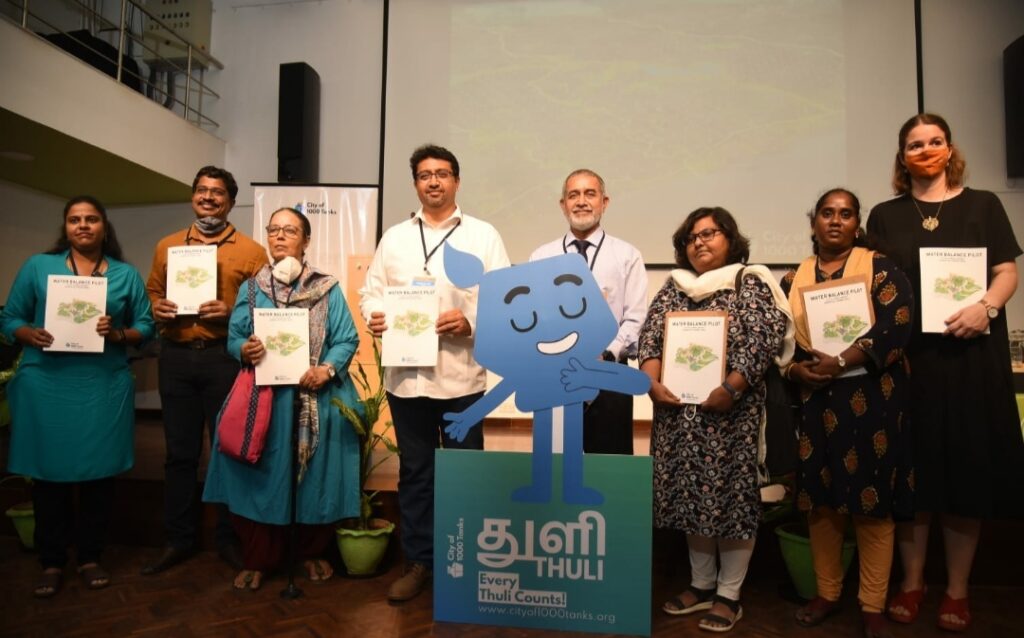City of 1000 Tanks team, comprisinginternational and local experts, have developed a strategy – Chennai-Wide Water Balance Model – to minimize and eliminate the wastage of water in Chennai. A pilot has already been initiated at Little Flower Convent in Mambalam, Chennai.
Chennai is staring at a risk of running out of water in the next decade and the City of 1000 Tanks has an immediate, midterm and long-term vision for the city’s water security. The team comprising – OOZE Architects, Madras Terrace, Care Earth Trust, IIT Madras, Biomatrix Water, IRCDUC, Uravugal Social Welfare Trust, Paperman Foundation, and Goethe Institute – will develop a Water Balance Model across the city by collecting rainwater, treating wastewater and runoff pollution with decentralized Nature-Based Solutions, and by recharging the underground aquifer.
Based on a unique Water Balance Model, the project will harvest and treat wastewater and runoff pollution before recharging into the underground aquifer. The project will engage collectively with residents, local businesses, institutions, and government bodies.
A Chennai-wide water balance model will be achieved through an incremental implementation process. Starting with pilot projects, then upscaling to flagship projects before effective city-wide implementation. Each upscaling stage is an opportunity to build capacity and improve performance inorder to demonstrate inclusive implementation for a water rich Chennai.
The ongoing Water Balance Pilot at Little Flower Convent, Mambalam, will be a proof-of-concept of the scalable Water Balance Model. It will further demonstrate a Chennai-specific implementation of all key elements within the project such as septic tanks, constructed wetlands, bioswales and detention parks. The Pilot will be up-scaled to the various City of 1,000 Tanks Flagship projects implementing and ensuring water security at increasing scales while leaving no one behind.
The initiative will help prevent droughts by increasing groundwater reserves while simultaneously mitigating risks associated with high frequency floods and sewage pollution. This project intends to fix supply-side issues by creating water retention and supply capabilities of 200-250 MLD (Million Litres per Day) in the first two phases of the project (out of the current 1,580 MLD urban demand).


